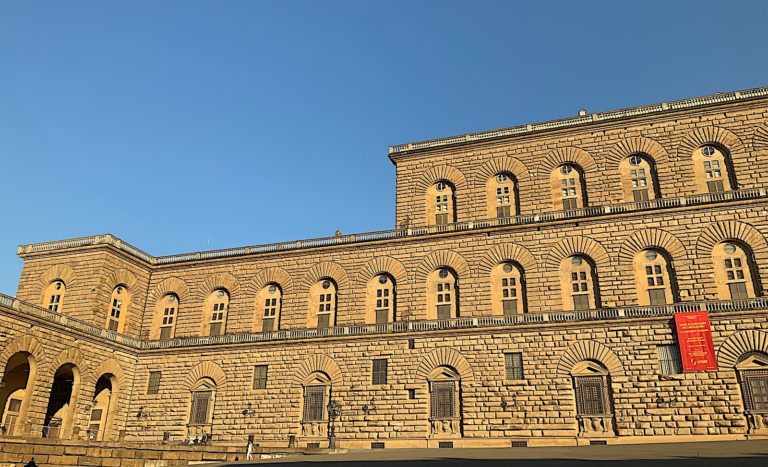
Age
1457 - 1840
Designers
Luca Fancelli, Filippo Brunelleschi, Bartolomeo Ammannati, Giulio Parigi, Alfonso Parigi, Alfonso Parigi il Giovane, Pietro da Cortona, Giuseppe Ruggieri, Gasparo Maria Paoletti, Pietro Conti, Giuseppe Cacialli, Pasquale Poccianti, Giuseppe Martelli
The palace is located, in the omonymous square, in the place where there was already a house of the Pitti family, rival of the Medici family; the works for the construction of the new residence of Luca Pitti, who wished to have a more luxurious palace than that of Cosimo il Vecchio de’ Medici, were probably executed between 1457 and 1466. The building work, possibly based on a Filippo Brunelleschi project, was executed by the architect Luca Fancelli. The high costs and the loss of power and political prestige of the Pitti family led to the suspension of the works, then definitively abandoned after Luca Pitti death in 1472. Between 1549 and 1550, Eleonora di Toledo, wife of Cosimo I de’ Medici, purchased the various portions of the palace and the surrounding lands, and new works of enlargments were immediately started. In particular, in 1561 the project was entrusted to Bartolomeo Ammannati, with the help of Alfonso Parigi. In 1565 Cosimo I de’ Medici left his apartments in the Palazzo della Signoria and Palazzo Pitti was elected as Grand Ducal Palace. In 1619 new extension works, which lasted until 1660, under the direction of Giulio Parigi and his son, Alfonso Parigi il Giovane, began. In 1763, by order of the governor of Tuscany, Antonio Botta Adorn, the works for the realization of two wings to delimit the sides of the square, as supported by many of the previous projects, started. The work began under the direction of Giuseppe Ruggieri and, successively, Gasparo Maria Paoletti, Pietro Conti and Giuseppe Cacialli. Simultyaneously to these works, in 1821, Pasquale Poccianti (assisted in the direction of the works by Giuseppe Martelli) had the task of realizing the new and current monumental vestibule of access to the palace; he completed also the project of the two wings (1840). In 1860 the Palazzo Pitti passed among the assets of the Corona d’Italia and, in the period of Firenze Capitale (1865-1871) was the residence of Vittorio Emanuele II. The transfer to the Italian government dates to 1919; it was executed by the decree of April 20th 1920.
The palace is realized in Pietraforte Sandstone; the balustrades on the three floors of the façade are in Pietra Serena Sandstone.


